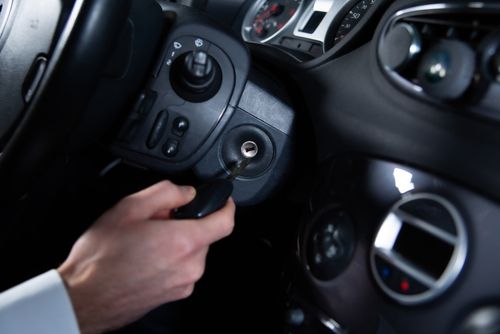Your vehicle’s ignition system plays a critical role in engine performance and reliability. It’s responsible for generating the spark needed to ignite the air-fuel mixture in the combustion chamber, allowing your engine to start and run efficiently. Without a properly functioning ignition system, your vehicle can experience performance issues, reduced fuel efficiency, or even fail to start entirely.
Understanding the Ignition System
The ignition system consists of several key components, including the battery, ignition switch, ignition coil, distributor (in older vehicles), spark plugs, and various sensors. These components work together to create and distribute the high-voltage spark necessary for combustion. Modern vehicles typically use electronic ignition systems, which improve efficiency and reliability compared to traditional mechanical systems.
- Battery – Supplies the electrical power needed to start the engine and power ignition components.
- Ignition Coil – Converts low voltage from the battery into a high-voltage charge necessary for sparking.
- Spark Plugs – Create the actual spark that ignites the air-fuel mixture.
- Ignition Control Module (ICM) – Regulates spark timing to optimize combustion.
- Crankshaft and Camshaft Sensors – Monitor engine position and adjust spark timing for optimal performance.
Why Ignition System Maintenance is Essential
Routine ignition system maintenance at Hinsdale Automotive is crucial to prevent breakdowns and costly repairs. A well-maintained system ensures:
- Improved Fuel Efficiency – Worn-out spark plugs or faulty ignition coils can lead to incomplete combustion, causing your engine to burn more fuel than necessary. Replacing these components with Hinsdale Automotive at the recommended intervals ensures efficient fuel usage.
- Smooth Engine Performance – A strong, consistent spark promotes optimal combustion, resulting in better acceleration, smoother idling, and overall improved drivability.
- Reduced Emissions – When the ignition system is not functioning properly, incomplete combustion can increase carbon buildup and emissions, negatively impacting both performance and the environment.
- Reliable Engine Starts – A healthy ignition system ensures quick and reliable starts, preventing frustrating delays or complete failures when turning the key or pressing the start button.
- Longer Lifespan for Engine Components – Regular maintenance at Hinsdale Automotive can prevent premature wear on vital engine parts, reducing the likelihood of costly repairs and extending your vehicle's longevity.
Signs Your Ignition System Needs Repair
Recognizing the warning signs of ignition system failure can help prevent major repairs. Hinsdale Automotive recommends looking out for:
- Difficulty Starting – A weak or inconsistent spark can cause slow cranking or failure to start.
- Engine Misfires – A faulty spark plug, or coil can lead to irregular combustion, causing rough idling and hesitation.
- Decreased Fuel Economy – Inefficient combustion forces the engine to work harder, using more fuel.
- Illuminated Check Engine Light – Many ignition-related issues trigger a check engine warning.
- Stalling or Loss of Power – A failing ignition system can cause sudden power loss, especially at high speeds.
Tips to Maintain Your Ignition System
To extend the lifespan of your ignition system and prevent unexpected failures, follow these maintenance tips recommended by the experts at Hinsdale Automotive:
- Regularly Replace Spark Plugs – Most manufacturers recommend changing spark plugs every 30,000 to 100,000 miles, depending on the type and here at Hinsdale Automotive, we stand behind the manufacturer’s specifications.
- Inspect Ignition Coils – Cracks or corrosion on coils can lead to misfires.
- Check Wiring and Connections – Loose or corroded wiring can disrupt spark delivery.
- Keep the Battery in Good Condition – A weak battery can impact ignition system performance.
- Use Quality Fuel and Additives – Poor-quality fuel can lead to carbon buildup on spark plugs.
- Address Warning Signs Promptly – Ignoring misfires or check engine lights can lead to costly repairs.
Professional Ignition System Repairs at Hinsdale Automotive
If you experience ignition system problems, seeking professional diagnostics and repair at Hinsdale Automotive is essential. Our certified auto repair shop has the expertise to test and replace faulty components, ensuring your engine runs efficiently. Whether it’s spark plug replacement, coil testing, or sensor diagnostics, timely repairs can prevent breakdowns and enhance vehicle longevity.
For expert ignition system repair and maintenance, contact Hinsdale Automotive today. Our experienced technicians will inspect and service your ignition components to keep your vehicle running smoothly. Schedule an appointment and ensure reliable performance every time you start your engine!

